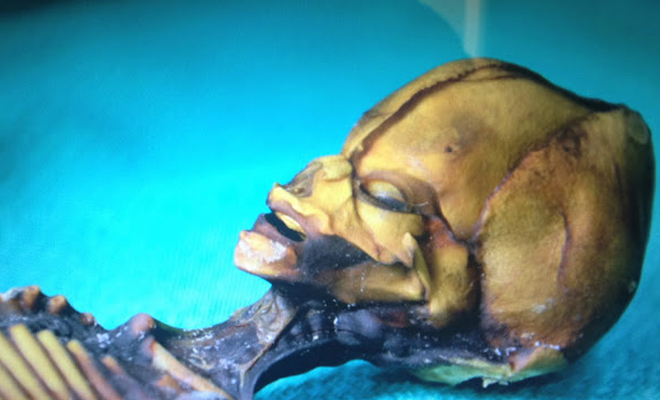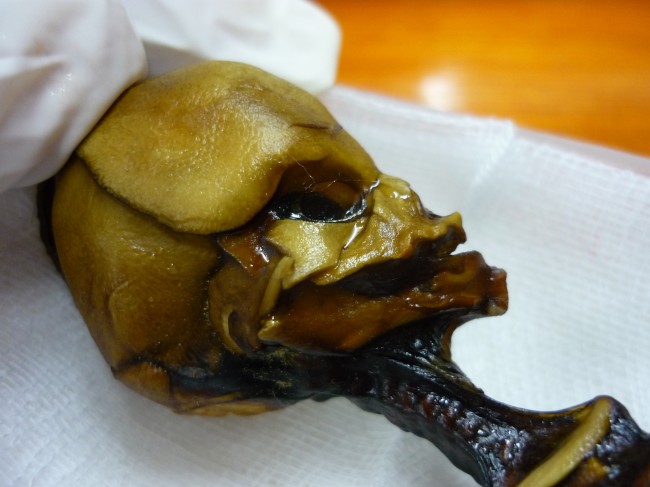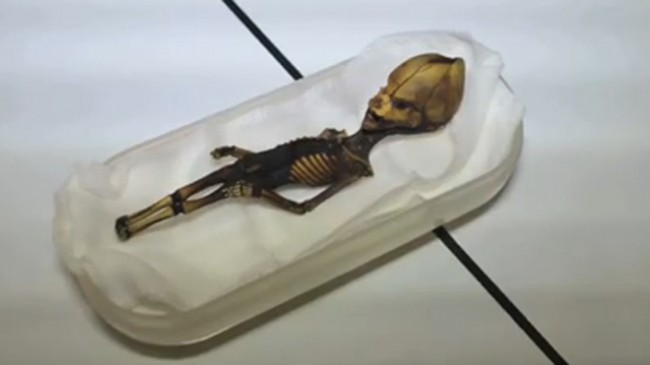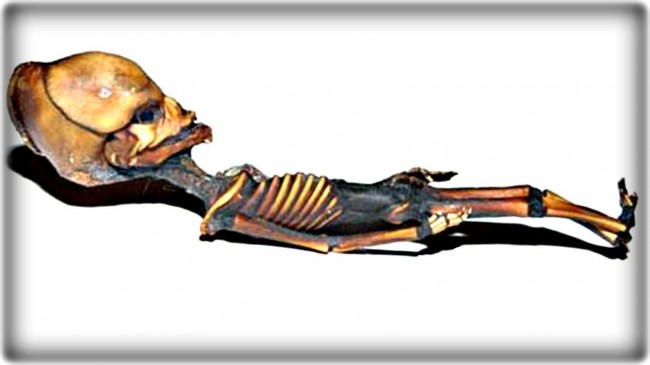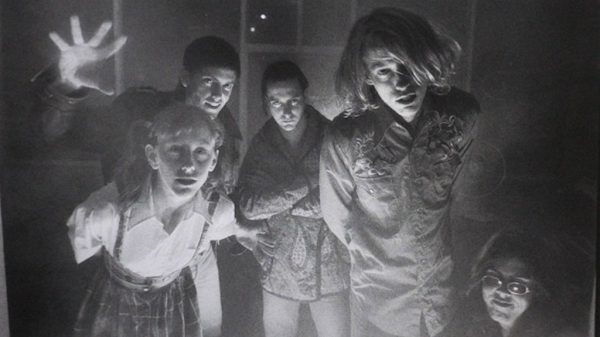In 2003, mummified remains of a thirteen centimeter humanoid being were discovered in the Atacama Desert of Chile. Not until recently was the specimen professionally examined. A team of experts at Stanford University was assembled to take DNA samples, X-Rays and CAT scans. First and foremost, the tests undoubtedly confirmed that the organism is real and not a hoax. The skeleton only has ten ribs, rather than the normal twelve. This is something that has never been found in humans. The skull is unusually shaped and much larger proportionately than that of humans. Speculation that the skeleton could have been an unborn fetus was disproved. The bones are well developed and a mature tooth can be seen. It has been concluded that the humanoid’s appearance is not the result of any known deformity, genetic defect, skeletal dysplasia or any other known human abnormality. The most shocking conclusion to date is that the humanoid lived to be six to eight years of age. This was assessed by examining the epiphyseal plates in the knees and comparing these to normal humans of various ages. This naturally raises the question, “If the being was human, how would it have been able to survive six to eight years in a remote desert at only thirteen centimeters tall?”
Another missing piece of the puzzle lies within the skeleton’s DNA. The genome sequencing showed that nine percent of the genes did not match with the reference human genome. This may be due to various factors, but it is interesting when you consider that humans are 99.5% genetically identical to Neanderthals and 96-98% identical to Chimpanzees. One last fact to ponder is that scientists have recently found that DNA has been around for over ten billion years, but Earth has not even existed for half that time.

